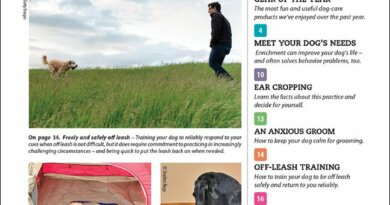Accessible Parenting Tips for When You Have a Baby
It’s practically a rite of passage for new parents to spend time researching the best baby gear, setting up the nursery, and wondering just how much life will change with the addition of their little one.
If you have a physical disability, it’s no different. You just might have to modify some of the standard baby equipment to work for you or use it in different ways than other parents.
“Parenting is the same whether you have a disability or not,” says Tammy Rayess, an occupational therapist and mom of two who has cerebral palsy and uses a wheelchair. “You’re just doing things in a nontraditional way.”
“The challenge is there really aren’t these adaptive products on the market,” says Nicole Lomerson, a mom with cerebral palsy and a researcher at the National Research Center for Parents with Disabilities at Brandeis University. “But disabled parents are really excellent problem solvers, and we find a way.”
“We modify things. We make things work,” says Kara Ayers, PhD, associate director of the University of Cincinnati Center for Excellence in Developmental Disabilities, a researcher at the National Research Center for Parents with Disabilities, and mother of three.
Ayers and her husband both use wheelchairs due to osteogenesis imperfecta, a genetic disease that affects their bones. She’s noticed that many times, adaptive products like wheelchair strollers will have great buzz as a prototype, but never actually make it to the market. Other times, she says the product will come from a medical equipment company and be very expensive or need insurance approval, which can be a challenge.
Even with a lack of baby products aimed at disabled parents, parents with all types of physical disabilities can find ways to make caring for a baby and toddler accessible.
Sleep
“I knew a wheelchair-accessible crib would be my biggest hurdle,” Lomerson says.
Since the two accessible cribs on the market at the time were very pricey, she found a hand-me-down crib that another mom with her disability had made wheelchair-friendly.
You can find plans online for ways to raise a standard crib to wheelchair height and add a sliding gate or door so you can pick your baby up through the side of the crib instead of reaching down into it. Be sure the gate locks on the outside and is childproof.
Cradles that attach to your bed, called co-sleepers, are a great option for the first few months. They are especially useful if you have limited reach or trouble getting in and out of bed.
Montessori-style bedding, which puts a crib mattress on the floor of a childproof room, can be a nice option when your baby gets bigger, Ayers says.
Changing
A typical changing table can be tricky if you use a wheelchair. Rayess made her own using a dog grooming table with a changing pad attached to the top. The table was sturdy and allowed her to wheel underneath and change diapers in a comfortable position. A desk is another good option if you use a wheelchair.
Many parents with disabilities simply change their babies on the floor, couch, or bed, Ayers says.
If you have challenges with your ability to move, she says it’s nice to keep diapering supplies in a few areas of your home so you don’t have to carry your baby to another room when it’s time for a change.
If you have a disability that affects your fine motor control, look for baby clothes with magnetic closures instead of snaps.
Car Seats
“The weight of the car seat was always a concern for me,” Ayers says. “We mostly planned to keep car seats in the car.”
If you plan to carry your baby in an infant car seat, look for one on the lighter end. Some styles have wheels that pop out to turn them into short strollers.
Rotating or swivel car seats can make it more comfortable to get your child in and out of the car.
Feeding
If you have trouble with your hands or fine motor control, baby formula dispensers and bottles designed to be propped on the baby can help you with feedings. A grape cutter is also handy: It allows you to quickly quarter grapes with one hand.
Typical high chairs with their wide legs didn’t work for Rayess with her wheelchair.“It’s very hard to get your chair close enough to that situation without doing acrobatics and bad body mechanics, and lots of opportunities for your kids to throw food at you.”
She found that a portable high chair that straps onto a folding chair or kitchen chair worked well.
Bathing
Bathing a slippery baby is tricky for anyone.
“A lot of parents with disabilities end up bathing with the child,” Ayers says. “The less you have to reach and the less the gap between you and the child is often really helpful.”
Rayess would bathe her daughters in a baby tub on her shower bench.
A bath visor that keeps water and shampoo from getting in your baby’s eyes can make it easier to wash your baby’s hair.
For parents with low sensation or vision, an audible water thermometer that beeps if the bath water is too hot or cold is a helpful safety device.
Carrying
For Lomerson, wearing her daughter in a baby carrier was easier than figuring out how to attach a stroller to her wheelchair. But if you’re handy, you can find ideas online for ways to add stroller attachments to your chair. Once your baby can sit up, you can also use a wide belt, a wheelchair calf strap, seatbelt, or even a strong scarf to secure them to your lap.
At home, nursing pillows are useful for supporting your baby in your lap.
If you have back pain or trouble bending over, an adjustable-height stroller is a good option.
If you have trunk weakness, a harness on your child can help you lift them off the floor. You could also use a swaddle blanket or a lightweight basket like a portable accessory carryall to pick your baby up with one hand.
Out and About
“Live life off the sidewalk” is Rayess’s personal motto. It took on an even bigger meaning when she had kids. Portable ramps help give her access when she travels or takes her daughters places that aren’t wheelchair-friendly. She also switched to a motorized chair after becoming a mom, in order to better keep up with her kids.
When it comes to keeping toddlers safe in parking lots or crowded places, Ayers and Rayess say there’s nothing wrong with putting your child on a “leash” or a backpack harness that you hold onto.
“I think safety and security is much more important than people being judgmental about it,” Ayers says.
Powder or spray sunscreen is easier to apply to kids than lotion if you have a poor grip or issues with fine motor control.
Smart Home
Rayess likes to automate as much as she can in her home to allow her to spend more energy on her kids. Smart home technology can automate things like curtains, thermostats, lights, speakers, windows, and locks – all of which can save time and are more accessible.
“Ultimately it’s the same parenting experience,” Rayess says. “It’s falling in love unconditionally. That love carries you through all the challenges that every parent faces. Parents with disabilities just get the opportunity to think out of the box, kick down barriers, and promote inclusion.”



